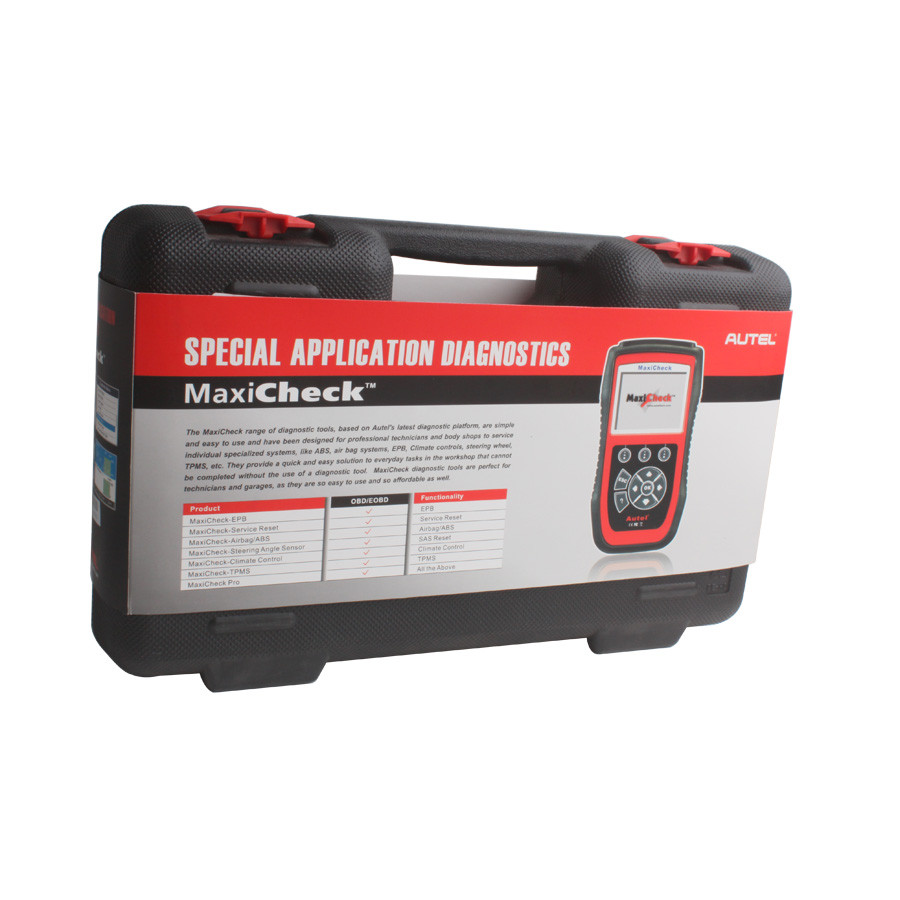MaxiCheck Pro has specialized features in Electronic Parking Brake (EPB) and Anti-Lock Braking System (ABS), Supplemental Restraint System (SRS) and Airbag, Service Reset, Steering Angle Sensor (SAS) Calibration and Tire Pressure Monitoring System (TPMS). In this article, I’ll take hard steering problem correction as an example and display the favorable use of MaxiCheck Pro in the process.
Hard or stiff steering for a vehicle is frustrating to say the least and can be dangerous as well. You have to count on proper steering at all times. With MaxiCheck Pro, after troubleshooting the problem, you may be able to fix it yourself.
Instructions
1 Check the air pressure in your tires. All tires should have equal air and filled according to the manufacturer’s recommended PSI. Improper amounts of air in tires, especially if they are too low, can cause hard and stiff steering. MaxiCheck Pro is specially designed to reprogram vehicles that do not have a TPMS relearn facility in the ECU and register or re-register sensor ID’s.
2 Check your power steering fluid level and condition. Lack of fluid will cause stiff and hard steering. Maintain the fluid at proper full level and the color should be dark reddish in color. If the fluid is very old and too dark you may want to change the fluid.
3 Inspect the pulley on the power steering unit with the car engine “off.” Proper tension is no more than 3/4 or 1 inch of play. Press down on the belt with your thumb to check tension. Be sure the condition of the pulley belt is good without frayed edges or cracks. Also perform a visual inspection with the engine running to be certain that the pulley belt is turning the pulley smoothly. If the belt is slipping you can encounter erratic and stiff steering.
4 Inspect the power steering unit. You can visually check for fluid leaks at connecting pressure hoses. A leak here will reduce your pressure and thus cause hard steering. Another test would be to run the engine and while in park have someone turn the wheels back and forth as you listen for any squealing or bearing sounds coming from the unit. If the fluid is low or the belt is bad you may also encounter a squealing sound, so be sure these items have been checked first.
5 Inspect the front end parts such as the ball joints and tie rod ends for lubrication and wear. Either of these situations can cause hard steering and too much wear on these parts can be dangerous as well.
6 Check to be sure that you have proper front end alignment. A tell-tale sign would be uneven front tire wear and pulling to one side while driving. If the wheels are not aligned properly, you can also encounter hard and stiff steering, especially while making turns. MaxiCheck Pro performs steering angle adjustment. You can totally rely on it to fix the problem.
Related to car steering system, either working as a single application tool or in conjunction with all wheel alignment systems, this easy to use tool diagnose steering system problems, perform steering angle adjustment, clear steering sensor fault memory and turn off steering wheel warning light. For more information, please click the related product image below and have a visit at our Home Site.

Hard Steering Problem Correction-A Practical Use Example of MaxiCheck Pro
by
Tags:

Leave a Reply